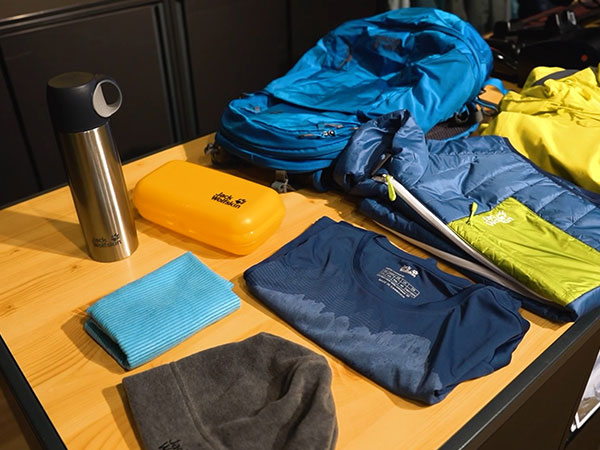
Shouldering the weight: how to best organise your pack for a day trip
Planning a day trip and need to get a pack ready? But what do you really need to take? How big is the ideal hiking pack, and what is the trick to organising your pack so that the load is distributed nicely (and your back thanks you!). Luckily, this will be light work thank to our expert’s go-to guide, and there’ll be nothing stopping your trip.

Tips on packing for your next day trip
-
If you want to be sure that you pack your backpack correctly, you should first think seriously about the choice of bag itself.
A small daypack with a capacity of 30 litres or less will usually suffice for a day trip. Tear-resistant and weatherproof material will certainly help prevent the contents from getting wet in a downpour. Padded straps and a waist belt will not only distribute the pressure on your back evenly, it will also make the backpack more comfortable to carry.
As regards loads: try to pack as few items as possible in your hiking pack. Ideally, you should look to carry no more than six kilos on a day trip.
-
The lighter the load, the better the hiking experience. Consequently, look to pack only the most necessary items for a day trip:
- A fleece in case you get cold
- A windproof gilet for in-between seasons or when hiking at higher altitudes
- A windproof and breathable rain jacket
- A functional top as a spare
- A quick-drying functional towel/tubular scarf that can be used either as a scarf or headband to absorb sweat
- Hat
- Lunch box
- Water bottle
Other important items include first-aid kit, suntan lotion, sun glasses and your mobile phone.
-
Once you’ve got everything you need, it’s time to pack them. Make sure you pack the items in your daypack in the right order. Heavy items should be positioned close to the body and around half way up your back. This may also include photo equipment and the food which you’re taking with you. Ideally, but depending on the model, there may be an additional compartment in the lower section of the daypack to store your food. If the heavy items are stowed as close as possible to your body, this will help your posture when walking. It will also relieve back pressure.
Lightweight, chunky items such as a gilet or rain jacket should be placed in the lower part of the backpack. Any items that you are likely to need quickly, such as suntan lotion, mobile phone etc., should be packed last, i.e. stowed at the top or in a top compartment. The water bottle goes in the side pocket so that you can stop for a drink at any stage without firstly having to take off the daypack.
-
Correct adjustment of the belt will ensure that it fits perfectly on your back. However, please note that the main load should not be carried by your shoulders, but rather be carried by your pelvis. Otherwise, the daypack will slip, causing your shoulders and your entire back to ache in no time at all. Then the best day trip will end up a frustrating experience. This can be avoided with a few specific adjustments when putting on the backpack.
- Fasten the waist strap just above the hips and tighten it so that it sits on it and is supported by it
- Fasten the chest strap and pull tightly
- Pull the shoulder straps tight at the same time, while moving your arms backwards
